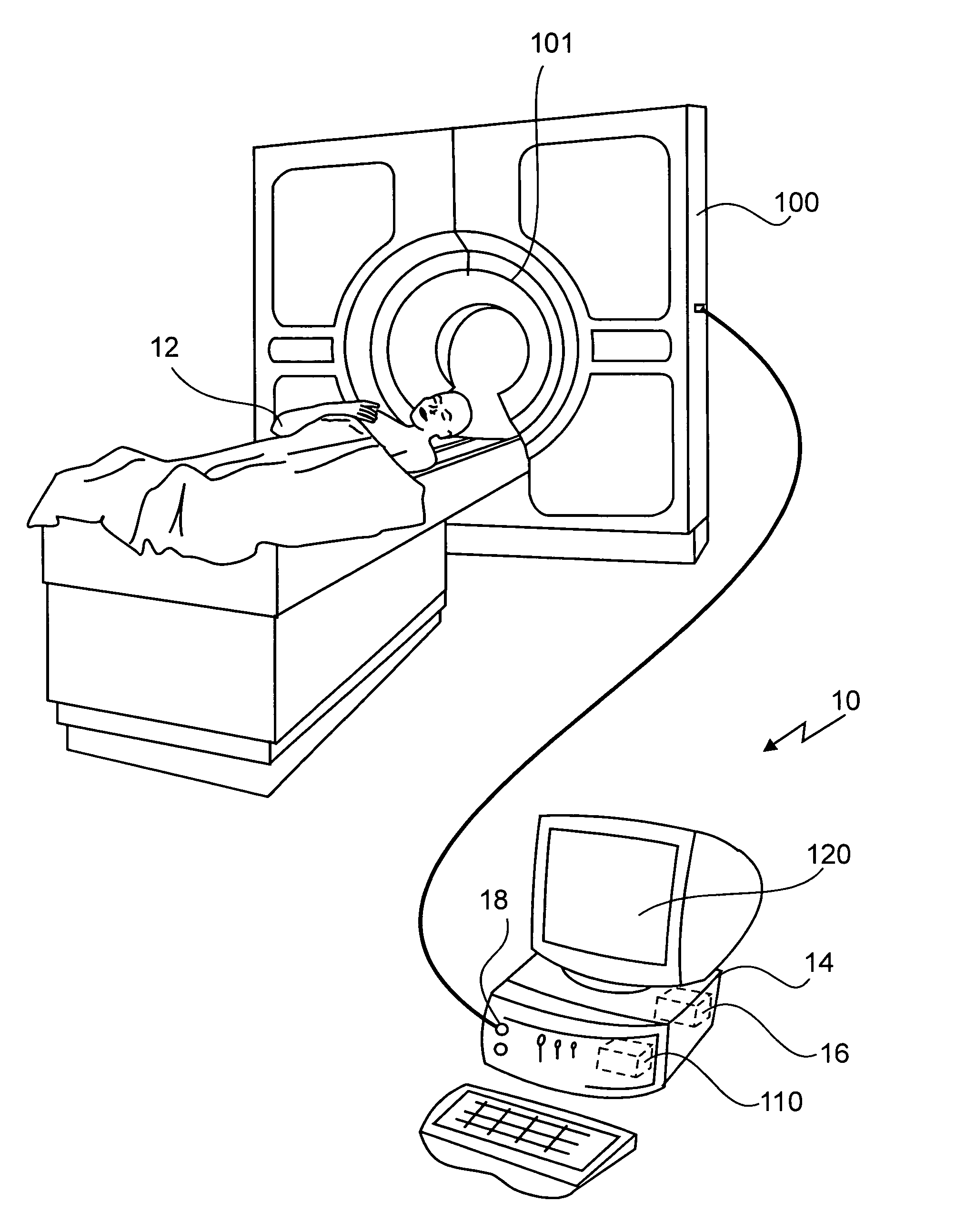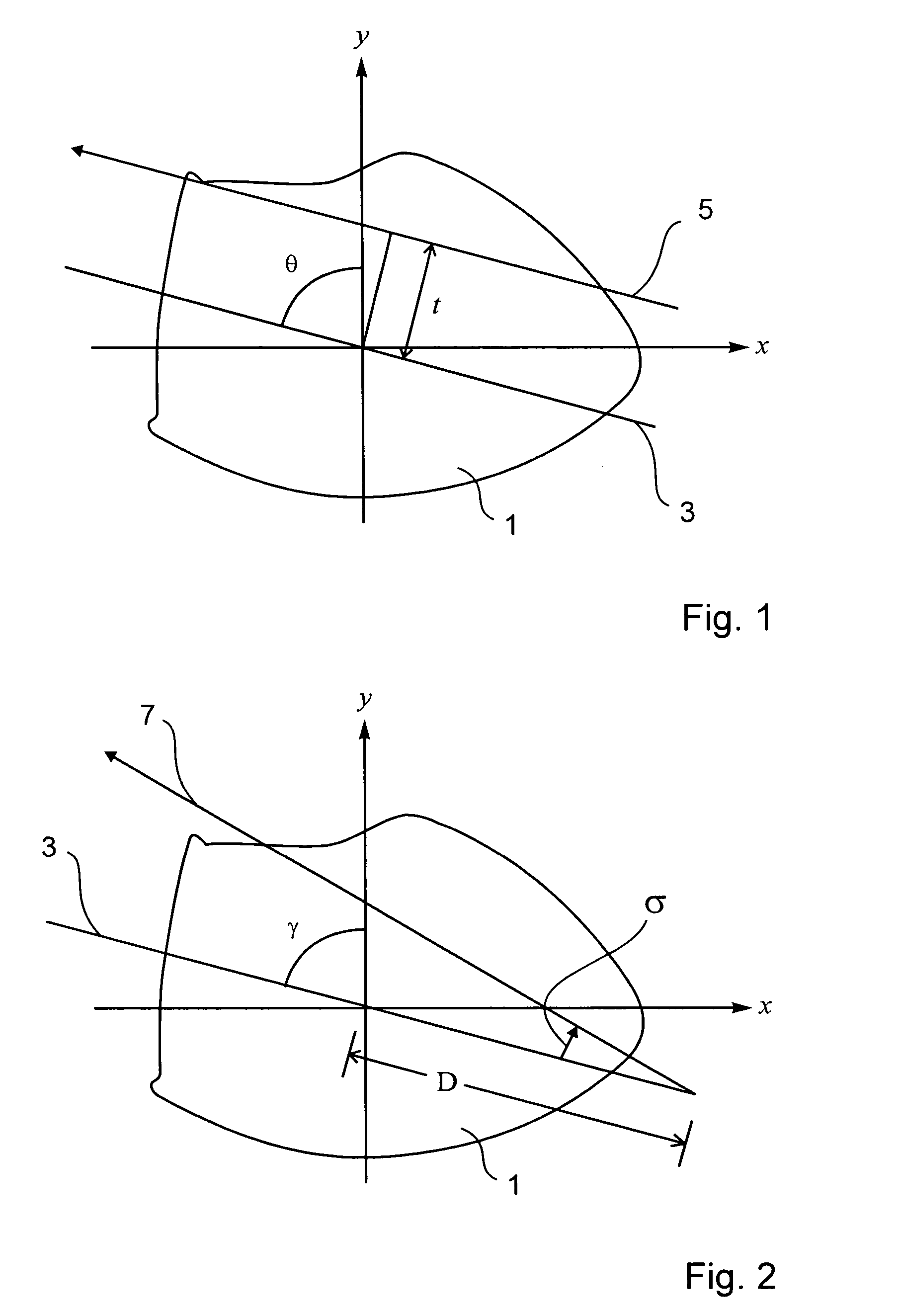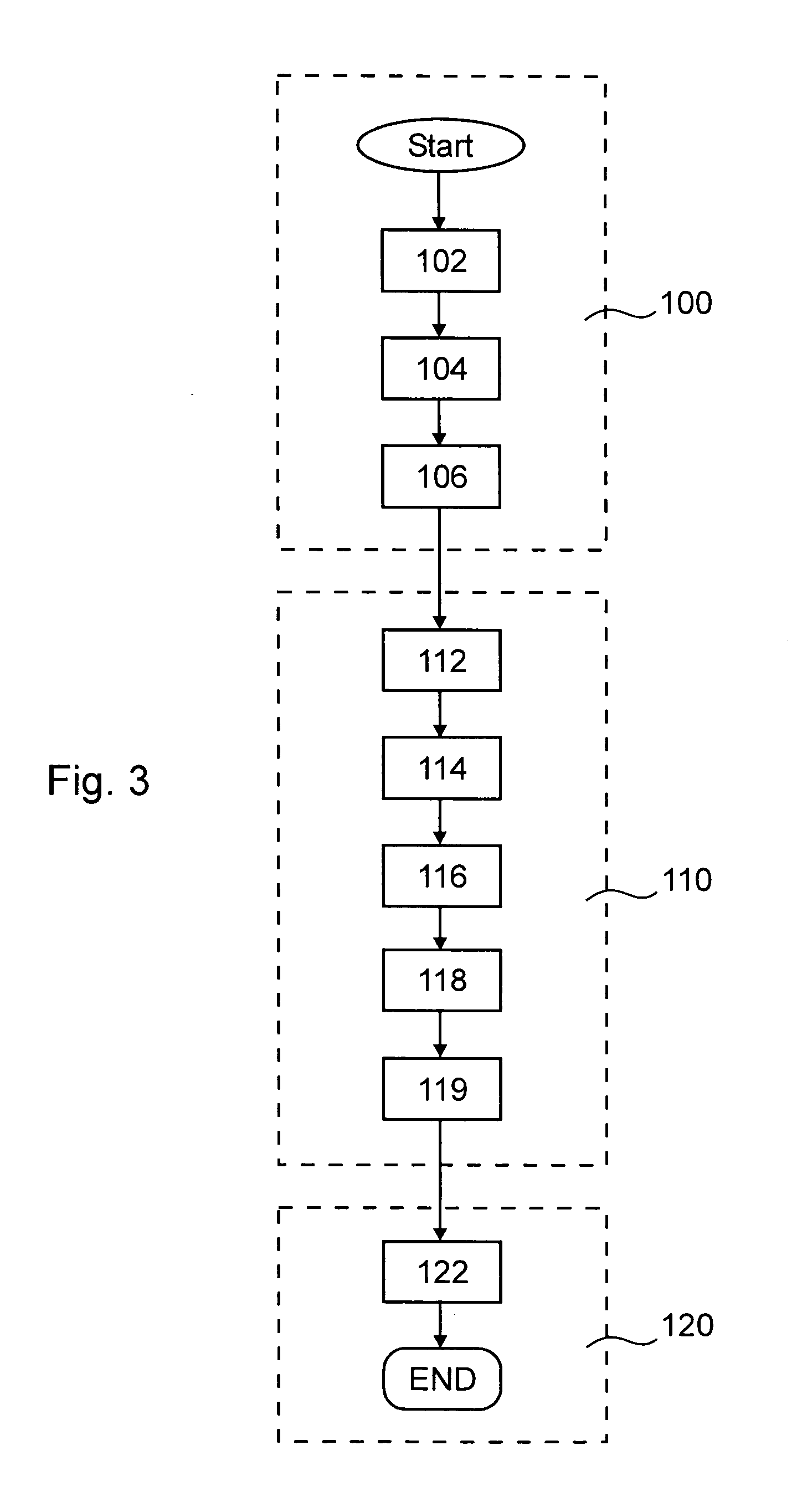Method for tracking motion phase of an object for correcting organ motion artifacts in X-ray CT systems
a technology of ct system and motion phase, applied in the field of medical imaging, can solve problems such as blurring of motion artifacts, impede diagnosis, erroneous diagnosis, etc., and achieve the effects of improving image quality, removing motion artifacts successfully, and high benefit in cardiac imaging
- Summary
- Abstract
- Description
- Claims
- Application Information
AI Technical Summary
Benefits of technology
Problems solved by technology
Method used
Image
Examples
first embodiment
[0078]In the following, two embodiments of the method for tracking motion phase of an object according to the invention, as indicated above in boxes 114 to 118, will now be described in more detail. In the first embodiment a Spatial Overlap Correlator (SOC) is combined with an unwrapping filter for tracking the cardiac motion and accurately detecting the less active phase therefrom. The SOC concept has been described in detail by the present inventor in Stergiopoulos, S.: “Otpimum Bearing Resolution for a Moving Towed Array and Extension of its Physical Aperture”, JASA, 87(5), pp. 2128–2140, 1990, and in Stergiopoulos, S.: “Implementation of Adaptive and Synthetic Aperture Processing in Real-Time Sonar Systems”, Proc IEEE, 86(2), pp. 358–396, 1998. The process of SOC is best understood by a simple example. Consider two photographs taken at time instances t0 and t0+Δt of a field of view including a moving train and stationary objects such as trees and houses. If corresponding pixels ...
second embodiment
[0091]In the following, the method for tracking motion phase of an object according to the invention will be described. Here, the less active phase of the cardiac cycle is identified using a property of the Radon transform. The property will be briefly described before its application for tracking the motion phase of an object is explained.
[0092]Let P(θ, t) be the Radon transform of an object f(x, y) contained within a unit circle, which is possible without loss of generality. The integral
[0093]∫-11P(θ,t)tkⅆt
is a homogeneous polynomial of degree k in cos θ and sin θ, where k=0,1, . . . i.e.
[0094]∫-11P(θ,t)tkⅆt=∑j=0kajcosk-jθsinjθ∀k≥0(kinteger).
For k=1 follows
[0095]∫-11P(θ,t)tⅆt=a0cosθ+a1sinθ=a02+a12sin(θ+tan-1(a0a1)).
From the above equation follows that the center of mass
[0096]∫-11P(θ,t)tⅆt
has a sinusoidal dependence on θ. Even in the case of the function f(x, y) consisting of a single point it is mapped to a sinusoid in P(θ, t). Therefore...
PUM
| Property | Measurement | Unit |
|---|---|---|
| symmetry property | aaaaa | aaaaa |
| axis of rotation | aaaaa | aaaaa |
| CT | aaaaa | aaaaa |
Abstract
Description
Claims
Application Information
 Login to View More
Login to View More - R&D
- Intellectual Property
- Life Sciences
- Materials
- Tech Scout
- Unparalleled Data Quality
- Higher Quality Content
- 60% Fewer Hallucinations
Browse by: Latest US Patents, China's latest patents, Technical Efficacy Thesaurus, Application Domain, Technology Topic, Popular Technical Reports.
© 2025 PatSnap. All rights reserved.Legal|Privacy policy|Modern Slavery Act Transparency Statement|Sitemap|About US| Contact US: help@patsnap.com



